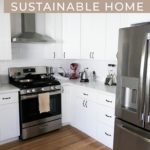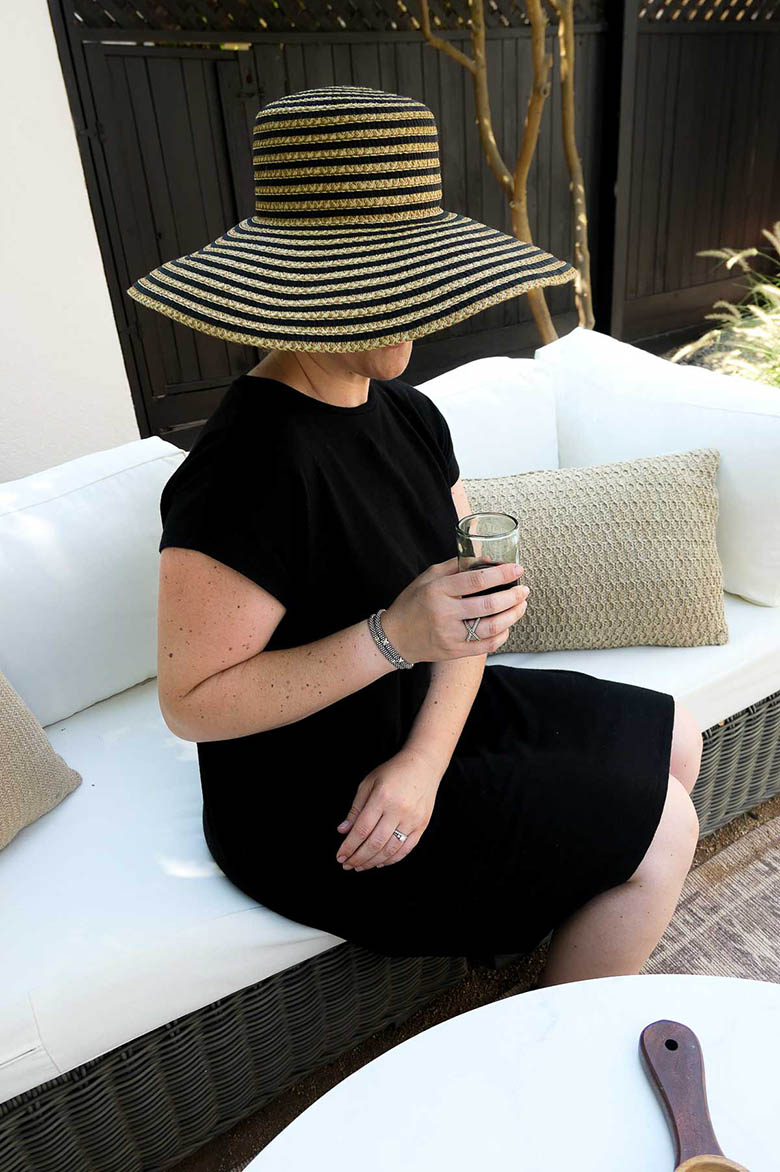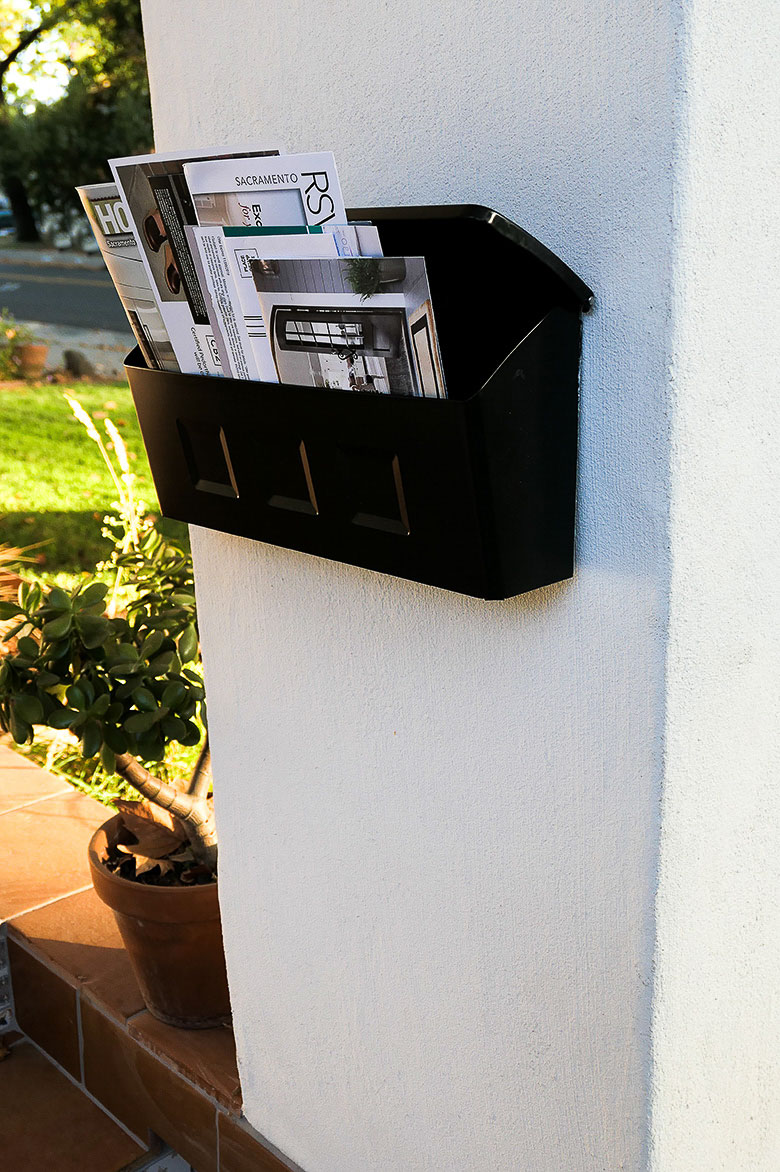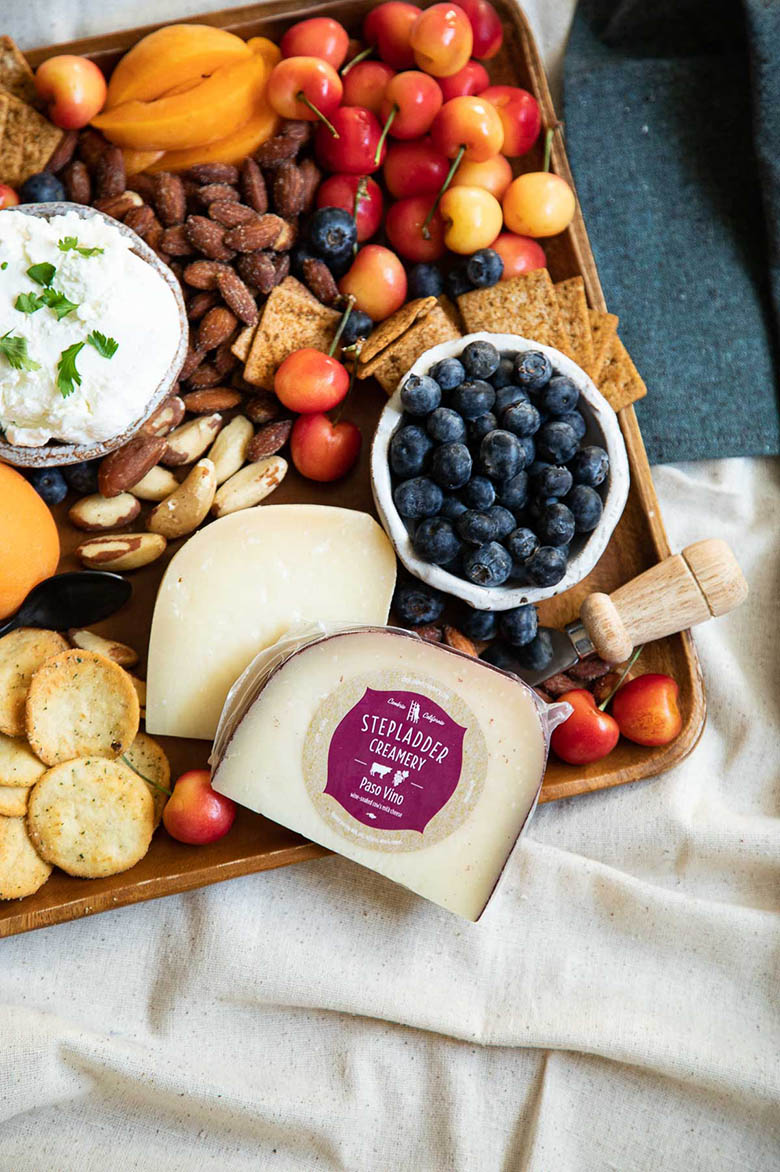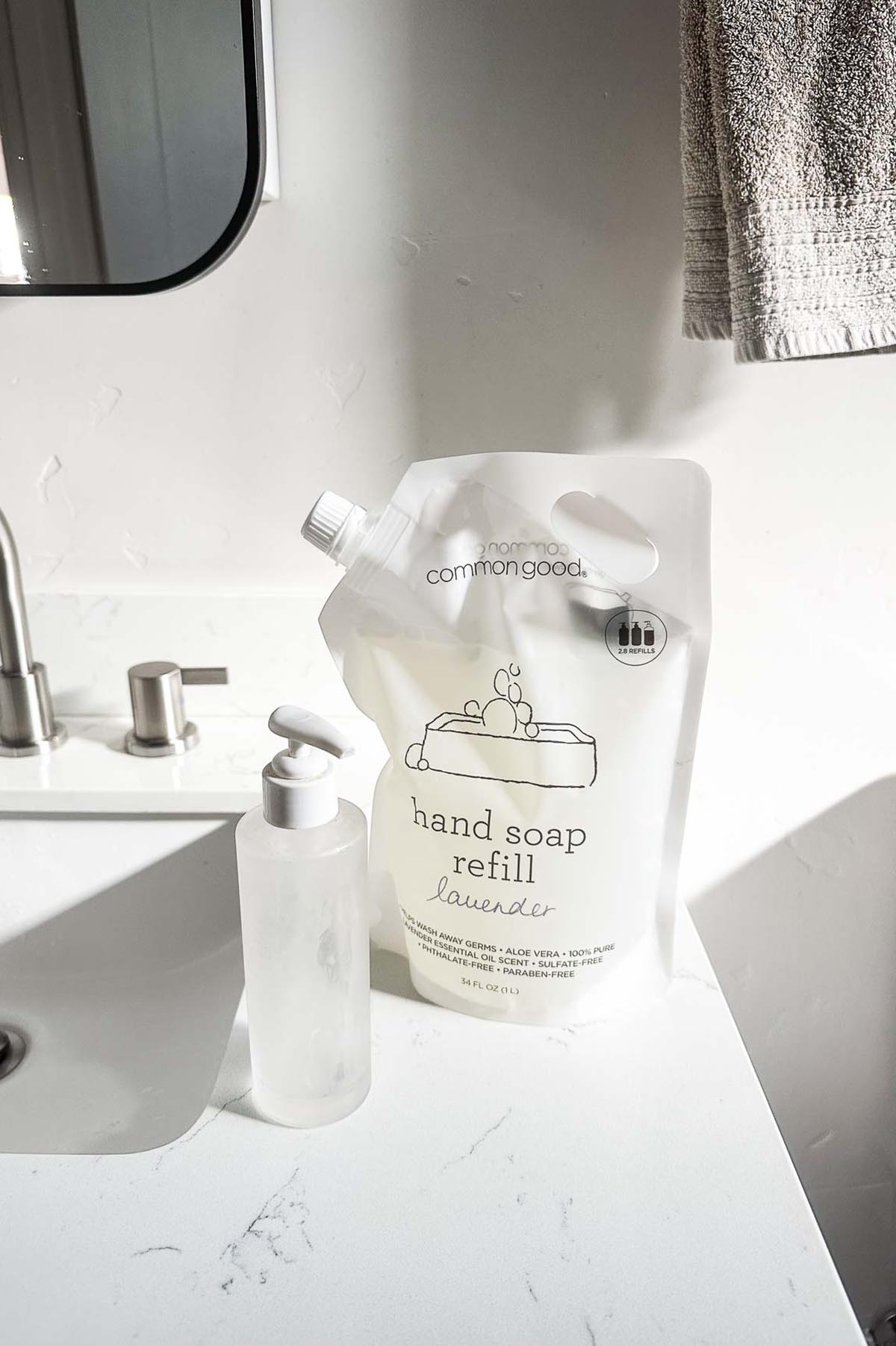House Sustainability Basics
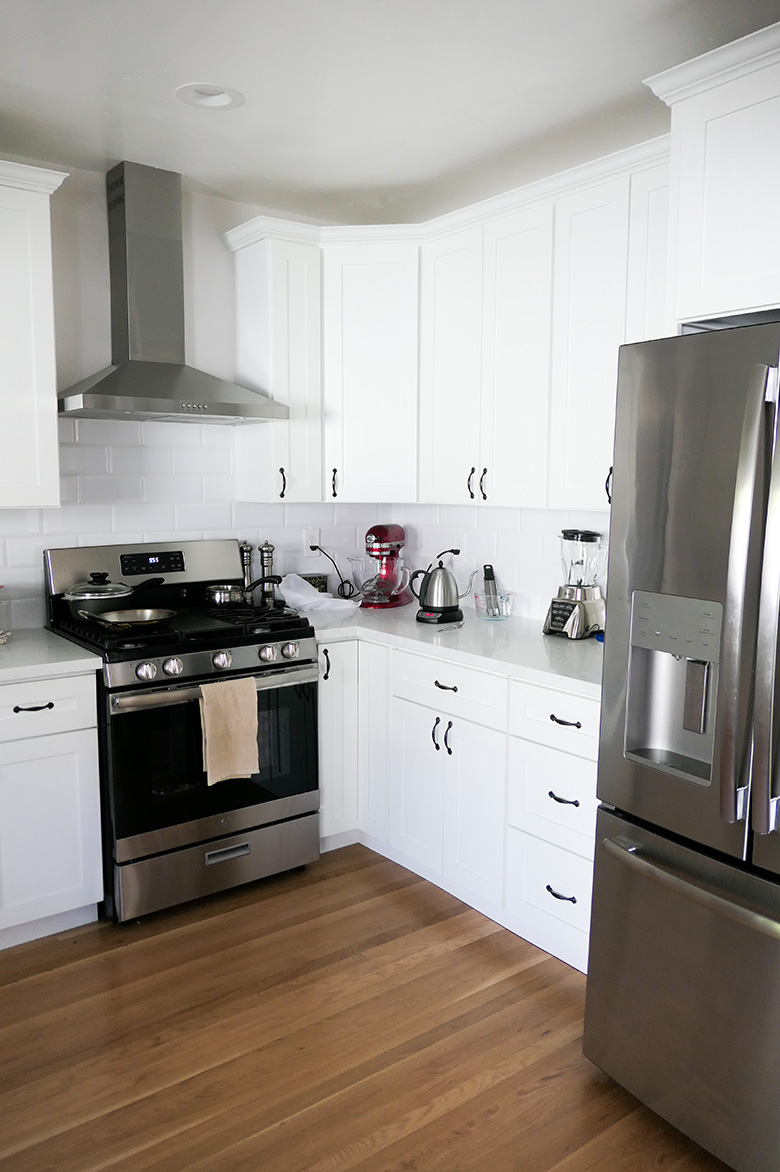
Creating a sustainable home takes time. I know everything takes time, but there’s a lot of learning and, at times, there’s saving up to happen (a lot of saving up, I’m learning). Here are our house sustainability tips that everyone can use!
Our home was built in 1925 (see the before/after of our bungalow house flip). With the flip came many (MANY!) modern upgrades – many of which were far more sustainable than what previously existed.
In our home, they replaced most of the single-pane windows with double pane to help with air flow and heat transference. They also installed a Google Nest to help with temperature management (it also lets you warm or cool the house from your phone if you’ve been away!).
But since moving to Sacramento two years ago, we’ve slowly found the imperfections and learned about decisions we can make in and around our home to live more sustainably.
CONTENTS
House Sustainability Tips
Smaller Home Size
So, no matter what you do, the most sustainable decision you can really make regarding your home is size – the smaller your home, the lower the impact on the environment. But what does small mean?
I have no idea. Well, I do, but I don’t have a specific number or answer. I’ve read that small home living is fewer than 1,000 sq feet, but then how many people can live there? Just one person in 1,000 sq. feet is astronomically different than a family of four!
Do you work out of your home? What’s your job? Because a living and work space really requires more room than just a living space.
You know. Lots of things, so I’ll just say smaller is better. Trying to embrace smaller (and preexisting) as much as possible is really the goal here.
At the moment, we live in a 1250 sq. foot house, but we’re in the process of converting the garage into an office for me and a guest room. See our ADU plans!
When we bought our house, I assumed it would be a bit of a struggle to live in such a small house. After two years, I can tell you that it’s absolutely plenty for our family size of 3!
Heating, Air, & Ventilation
As I mentioned before, we have a Google Nest in our house. While it offers economical learning of your practices, we do it all manually, but we keep a very close eye on temps, costs, etc.
With a bigger house, heating and air requires more gas and electricity. Thankfully our house isn’t too big and, in the summer, our big oak tree helps us keep out the heat quite well.
For better or worse, we do still have beautiful single-pane windows in two rooms in our home. Not only does the glass allow for heat transfer in and out, the wood frames create gaps for air to flow freely as well.
And then we don’t currently have any insulation as whatever was once put in the attic space has dinistegrated.
So while it doesn’t take much to heat or cool our home, it’s not perfectly energy efficient for those reasons – something which we plan to fix in the coming years (one thing at a time).
These are the bigger (but doable) house sustainability tips for any house.

Sustainable Appliances
And, of course, part of that conversation includes appliances. We have one tv in our house – in the living room, so entertainment appliances aren’t a huge power user.
Our kitchen appliances are all energy efficient, however, they’re all full-sized and still use a lot of electricity. Because I don’t have a clothesline (yet!), we try to hang dry a fair amount of our clothing on a drying rack, but we still run the dryer regularly.
Our refrigerator is also energy-efficient and our gas range works wonderfully, but we are absolutely considering an electric range at some point to work toward a gas-free home.
One thing to consider when thinking of switching to an electric home is your current electric panel. Because our house was built so long ago, Sacramento limits the size of our electric panel. It was an 100 AMP panel until recently, which quickly maxed out when we added the charger for our Tesla Model Y electric car.
{Shown here: natural air fresheners to naturally deodorize (and scent up! our kitchen)}
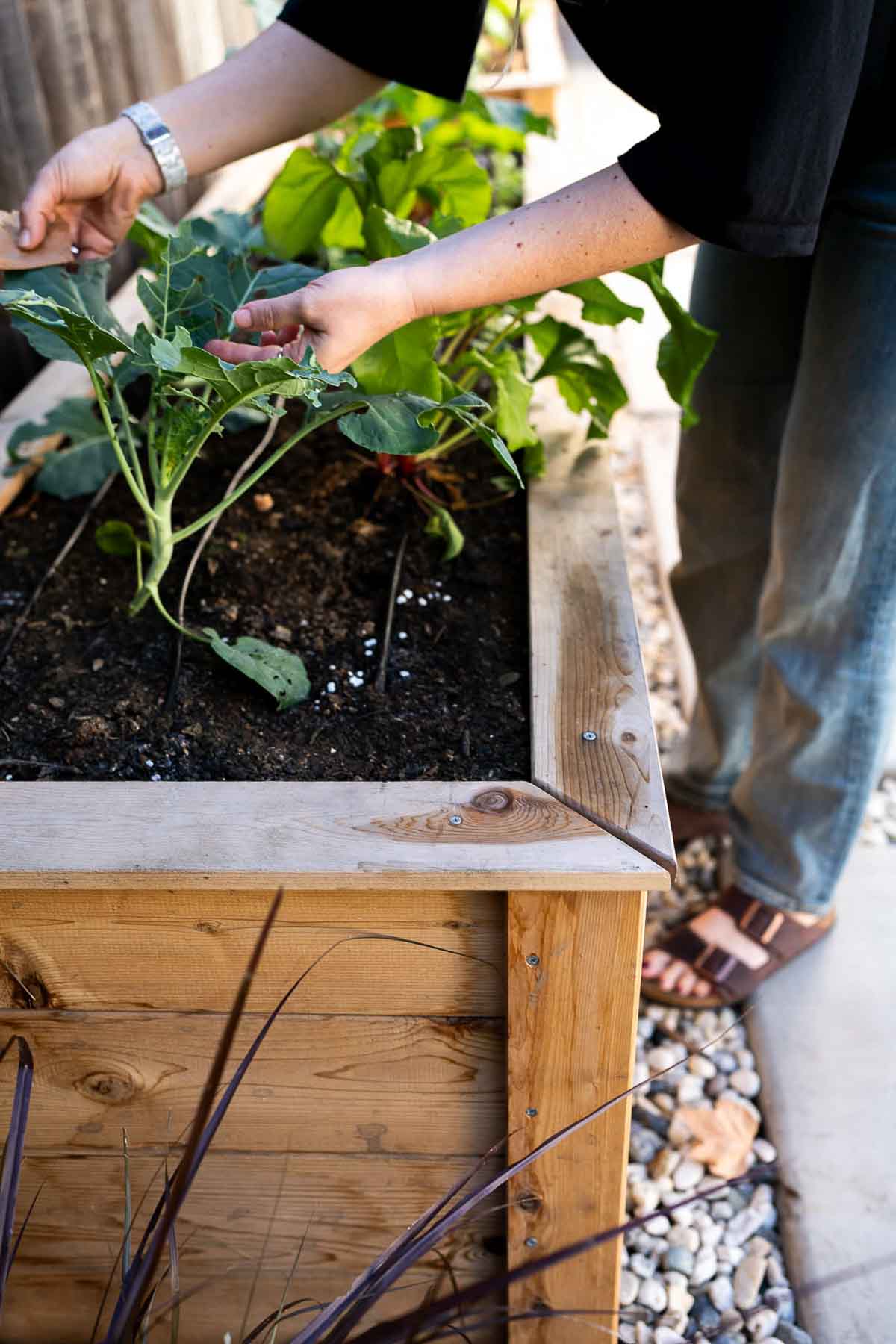
Landscaping in House Sustainability
The outside of your home is an important consideration as well. We do have standard grass (a total water-suck that’s not native). It was installed before we moved in and we haven’t changed it yet.
As we fix up our backyard, we are hoping to opt for a California-native grass and then drought resistant (and native) landscaping. This is all in addition to my side garden where I’m learning to grow some of our food – nothing stupendous at the moment, but it all helps and it brings me so much joy!
See our cedar planter beds with fall plantings and how we use mosquito dunks to get rid of mosquitos in our backyard!

House Sustainability Purchases
And finally – purchases. I’ve covered some of this before, but we are trying to shop locally and small a decent amount. No matter where we shop, however, we’re trying to buy more intelligently and mindfully for everything (looking at long term use, durability, and actual need).
I’ve been hitting up our farmers market regularly, buying all the eggs and produce we need in the summer and some of what we need in the winter! I’m not here to say we’re perfect and I often go through phases of dependability on this front.
But no matter where we shop, I do try to avoid food waste at all costs, while being responsible about when we actually need to throw away leftovers.
I also frequent my refill store for home goods and try to shop a combination of local markets and local groceries. Learn how to shop bulk bins and refill stores!
These sustainable bathroom swaps, including the best bamboo toilet paper, and kitchen swaps have been handy as well as using some refill pouches for products we love! And we’re learning more about better home goods like sustainable bedding brands
See some of my other go tos for online sustainable shopping!
Cleaner Products
Buying and using cleaner products has also been a big one. With a kiddo in the house, I really didn’t want to have a stash of items I desperately needed to keep him away from – namely cleaning products.
So while our switch to non toxic cleaning products began a while before he joined our world, it picked up after that.
Cleaner products are important because they wash down the drain into our water supplies and they keep our air cleaner (including candle burning – something we really don’t do much now and only with beeswax or very clean candles).
Compostable bags for compost and trash are also a no brainer. And, though indulgent, we can’t rave enough about our electric composter!
These easy sustainable swaps are a great place to get started too!
Sustainable Home Progress Report
So all in all, we’re making small steps. I’ve never claimed to be an expert at sustainable living or making our sustainable home perfect, but we’re making small, baby steps that are slowly coming together as we save up and research insulation, double pane windows, electric appliances, and other various ways to save the world!
Small Home Living Tips
Want some organization tips for small house sustainability living? Check out these posts of kitchen appliance organization, how to store reusable bags, seasonal clothing storage, and small home office ideas, including mail and paperwork organization!
You’ll also want to read my go to clean home cleaning products; how to clean out every room in your home; and how to declutter your mailbox!
Keep an eye on this constantly updated list of sustainable product reviews for every aspect of life!
As you downsize, drop off donations aren’t the only option. Check out local Buy Nothing Groups (see my Buy Nothing group review and tips) or have a yard sale. Check out these helpful garage sale pricing tips to get started and make a little money!


